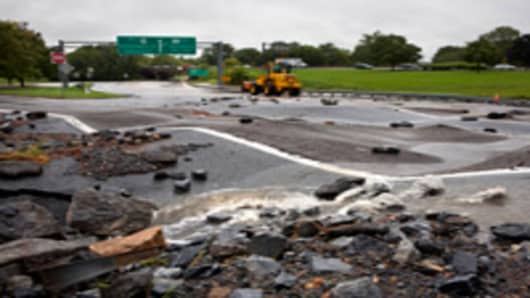Agility CEO Bob Boyd said all businesses should create detailed preparedness plans for surviving the worst disaster they can envision. “With no advance plan, you’ll make mistakes, do everything more slowly, and give out bad information,’’ he said.
The worst case scenario arrived in April when a killer tornado hit Tuscaloosa, Ala., turning entire neighborhoods into rubble. Left standing was DCH Credit Union, which lost power, telecommunications and web access to serve its members — the doctors and nurses working endless shifts at a nearby hospital to care for the injured. By activating its disaster plan, however, the credit union was able to make payroll within two days using generators and satellite connections, Boyd said.
Small businesses are more vulnerable to sudden crises than large companies, but they’re usually less prepared, said Boyd. A smaller firm may lack the cash, resources and specialized risk management personnel found at big companies. A major bank with one flooded building may be able to send customers to other bank branches. But a small credit union at one location has fewer options to maintain service.
Even a short disruption can doom a small company. The Insurance Information Institute found that 40 percent of businesses never reopen following a natural or manmade disaster.
However, some basic planning can improve the odds for many small outfits, Boyd said. Owners can think it through — what critical functions should be restored first? If half the employees can’t reach the workplace, are other staffers cross-trained to do critical jobs? After a tornado, what support would employees need to continue coming to work? How will the business communicate if cell phone towers are destroyed?
Agility, based in North Carolina, does much of that thinking for its 10,000 US members, who each pay about $495 a month for the disaster planning and recovery service. After a natural disaster, Agility can relocate a firm with as many as 200 employees in a single day, Boyd said.
But small companies on limited budgets can draw up their own plans and line up emergency resources in advance. Boyd strongly recommends drills to uncover any weaknesses in disaster procedures. DCH credit union discovered after the Tuscaloosa tornado that its small, portable generators were inadequate to power the business, causing a full day’s delay of banking service while larger ones were installed.
Webinar participants asked Agility how to keep a generator running when a power outage prevents gas stations from pumping the fuel needed for the generator. Possible solutions, according to Boyd: Set up fuel delivery service in advance with a local contractor. If you have a fuel tank, keep it filled.
For many small business owners, the spate of natural disasters in 2011 served as unwelcome real-life drills that taught them how to be more prepared next time.
Roxanne Knight’s family saw the peak summer tourist business evaporate at their motel, Reed’s Lodge, as the historic Wallow fire raged in Arizona’s White Mountains. All but one of Knight’s seven motel employees evacuated, along with most other Springerville residents. But Knight, her husband, son, and daughter-in-law kept Reed’s Lodge open to accommodate the weary firefighters who battled for a month to control the conflagration.
The motel was well-prepared with extra supplies, but Knight learned she lacked one crucial item. The dense smoky air made her chest hurt, and the thin paper face masks sold at drugstores couldn’t filter it out. At one point, the robustly healthy rancher feared she would have a heart attack. She finally located thicker cottony masks at an auto parts store that was one of the few businesses still open on Springerville’s deserted streets.
Reed’s Lodge filled its 49 rooms for two months during the Wallow fire and its aftermath, maintaining revenue for the Knights. The family also built a fan base among firefighters, emergency workers, and Springerville evacuees who constantly phoned the motel switchboard for news.
The upside of a disaster, Agility’s Boyd said, is that well-prepared businesses can earn tremendous loyalty by keeping open to serve the community.
That’s what Buncher’s Hardware did when Hurricane Irene sent floodwaters spilling through downtown Milburn, N.J., in August.
Buncher’s owner, Frank Hawes, had learned a lot by living through Hurricane Floyd in 1999, when his store’s basement warehouse filled with eight feet of water. The wood shelving floated and overturned, dumping bags of fertilizer, cement and grass seed into the mess.
By the time Hurricane Irene hit in 2011, Buncher’s basement had stable metal shelving and sump pumps permanently wired to run even as the floodwaters rushed in. Hawes kept the flood levels at 4 feet, minimizing his merchandise losses. He was open for business as soon as the sidewalks cleared, selling his neighbors the pumps, generators and other supplies they needed to deal with the floodwaters in their own homes and businesses.
Hawes will share all he’s learned with any customer who asks for his advice.
“Sometimes they use it,’’ he said drily. “Sometimes they don’t.’’


